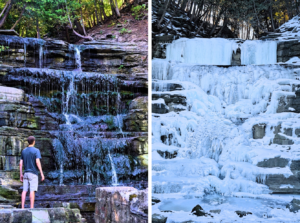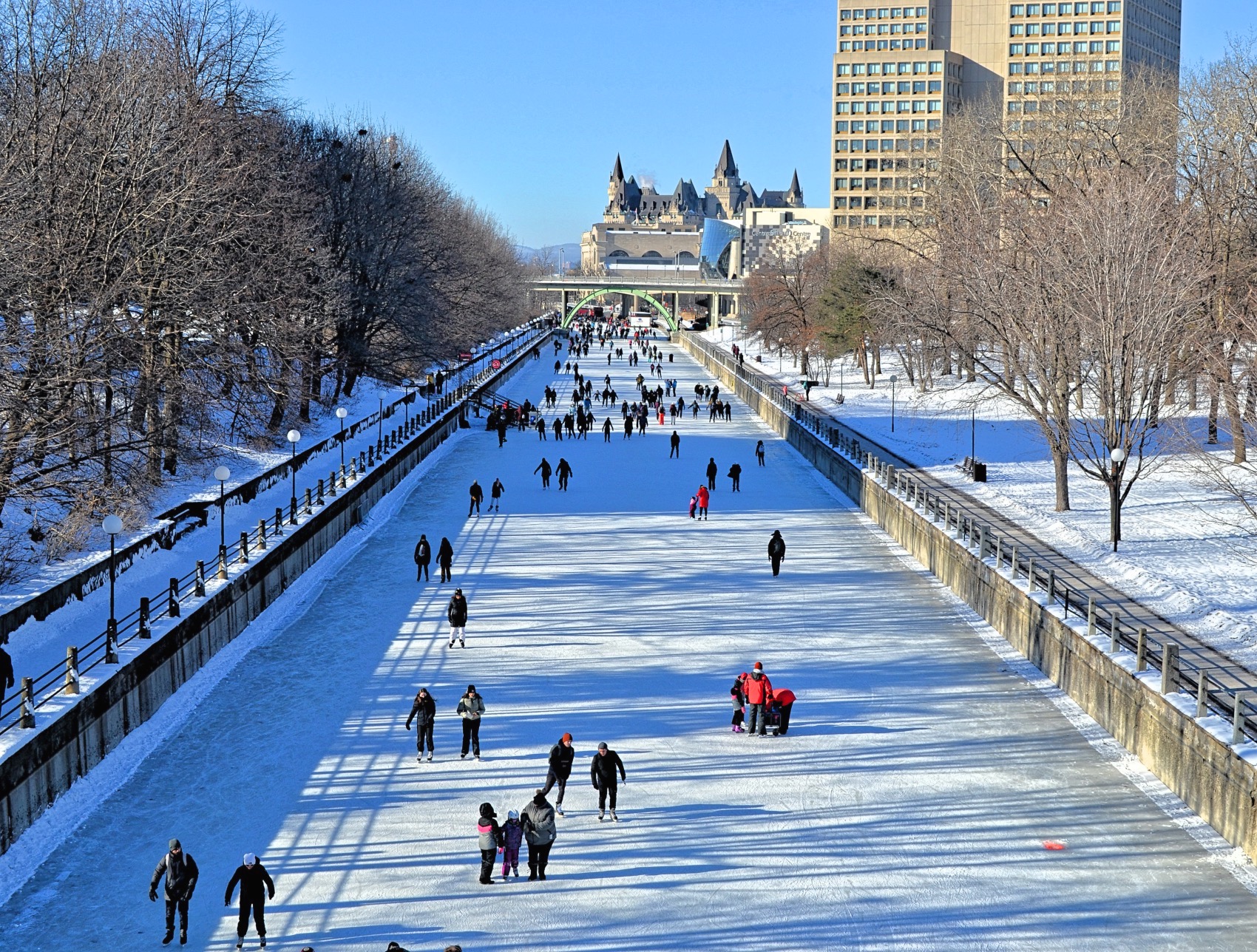
The World’s Largest Frozen Ice Rink
The Ottawa Rideau Canal, which first opened in 1832, is North America’s oldest continually operating canal system. The Rideau River was given the algonquian name Pasapkedjiwanong, which means “river that flows between the rocks.” The word rideau comes from the French word “rideau”, which means curtain. When Samuel de Champlain travelled up the Ottawa River in 1613, he saw the twin falls of the Rideau River where it meets the Ottawa River.
Thousands of labourers and tradesmen (carpenters, blacksmiths, stone masons, etc.) were employed by independent contractors under the direction of the Royal Engineers to build the Canal. The Royal Engineers did all of the engineering design work, much of it by Colonel By himself, despite the fact that the actual construction was done for the most part by these independent contractors. Colonel By split the Rideau into 23 work parts with the goal of having a contractor fulfil the work requirements for a single segment in less than two years.
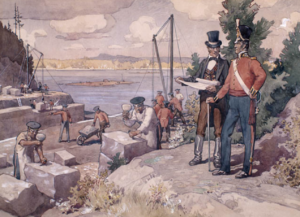 Colonel By Watching the Building of the Rideau Canal, 1826
Colonel By Watching the Building of the Rideau Canal, 1826
Colonel By was most concerned with defending the canal itself. The Canal, which was built as a military supply route, was vulnerable to attack. As a result, By proposed purchasing extra land and erecting a number of blockhouses. This project was estimated to cost £69,230. (about 2.6 million dollars today).
Although work on the southern part of the canal continued until the spring of 1832, the canal was basically finished by November 1831. The two Sappers and Miners companies were disbanded in December, and several of the men were assigned to the freshly constructed locks as Lockmasters.

Forty Royal Sappers and Miners who assisted in the construction of the canal were given land grants along the Ottawa Rideau River when it was completed. Many of these individuals also went on to become the first lockmasters. The canal remained under the supervision of the British Ordnance Department until 1856, when it was handed over to the provincial board of works. The Rideau was handed over to the Canadian Parks Service, now known as “Parks Canada”, in 1972. To this day, the Rideau’s legacy and original spirit are preserved by Parks Canada’s staff.
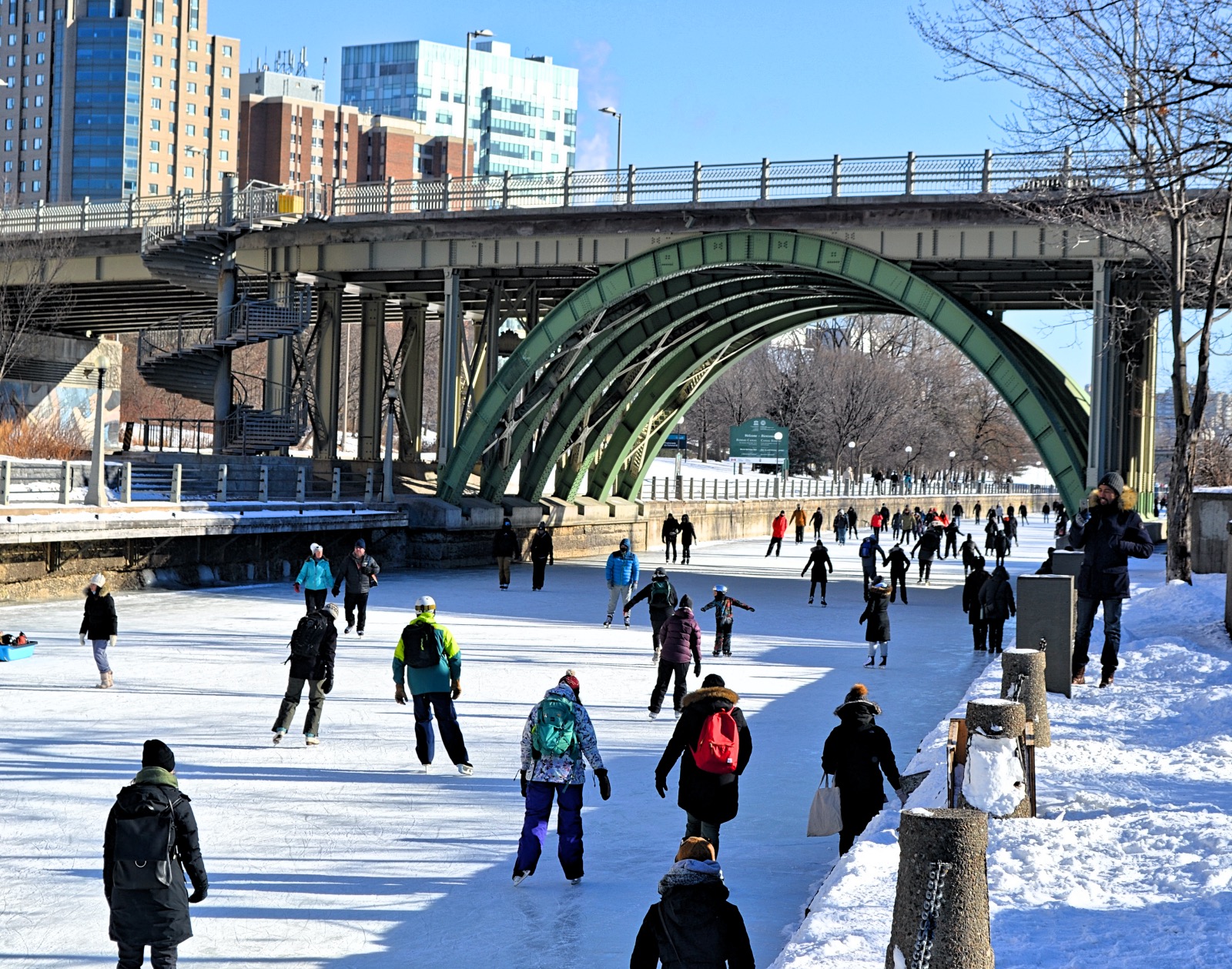
The NCC turns the historic Rideau Canal into the world’s largest skating rink, every winter. The Rideau Canal Skateway is a 7.8-kilometer long path that runs through the centre of Canada’s capital, Ottawa. The Rideau Canal, a UNESCO World Heritage Site, transforms into a gem that is the pride of Canada’s Capital and a distinctive attraction in the winter.
Non-skaters can walk or shuffle along the Skateway’s borders (away from skaters) or on the canal’s walkways. For the most up-to-date information on ice conditions, go to the Skateway website.
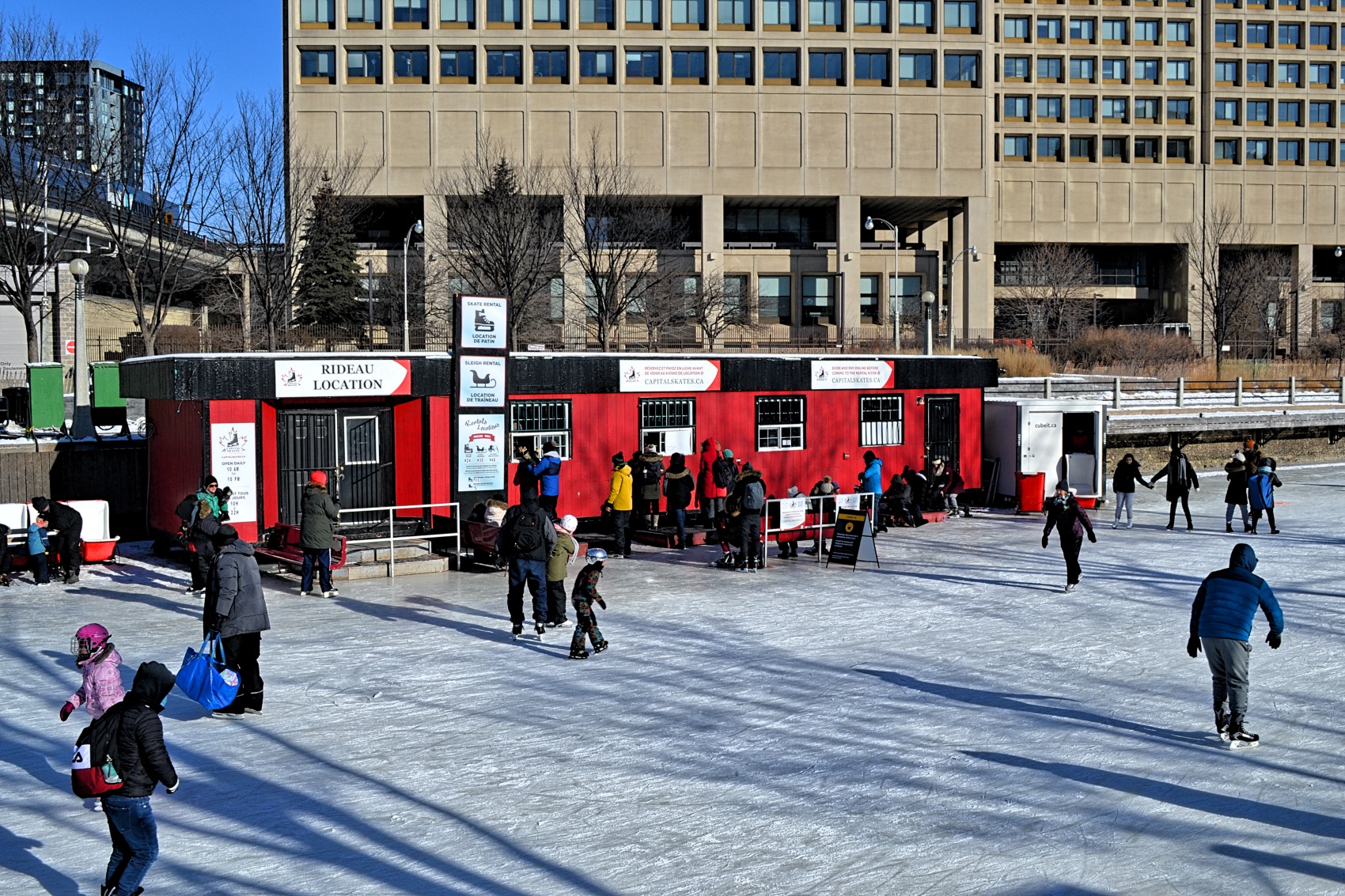
It runs from Carleton University’s Hartwells Lockstation to the locks between the Parliament Buildings and the Château Laurier, passing through Dow’s Lake in the process. It is a major tourist destination and recreational area, as well as the site of Ottawa’s Winterlude festival. Beaver Tails, a fried dough delicacy, are offered in kiosks along the skateway, along with other food and beverages.
Although some Ottawa citizens have been skating on the canal as an impromptu surface for years, the canal’s formal use as a skateway and tourist attraction is a relatively recent idea.
The Canal is now open. The skating season typically runs from mid January to early March, but it is weather-dependent. The Skateway is free and accessible 7 days a week, 24 hours a day.
. . .



